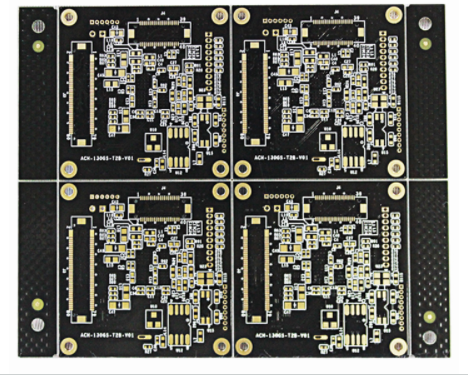Problems and improvement measures of broken holes/permeation plating during use of PCB dry film
With the rapid development of the electronics industry, PCB wiring is becoming more and more sophisticated. Most multilayer circuit board manufacturers use dry film to complete graphics transfer. The use of dry film is becoming more and more popular, but there are many misunderstandings when using dry film., The editor of the current electronics factory summarized some of the content for reference.
1. There are holes in the dry film mask
Many people think that when making PCBs, when the dry film has broken holes, the temperature and pressure of the film should be increased to enhance its bonding force. In fact, this view is incorrect, because the temperature and pressure are too high. Excessive volatilization of the solvent of the etched layer makes the dry film brittle and thin, and it is easy to be broken during development. We must always maintain the toughness of the PCB dry film. Therefore, after the holes appear, we can improve from the following 6 points:
1. Reduce the temperature and pressure of the film;
2. Increase exposure energy;
3. Reduce developing pressure;
4. Improve drilling and piercing;
5. Do not stretch the dry film too tightly during the filming process;
6. After sticking the film, the parking time should not be too long, so as not to cause the semi-fluid drug film in the corner to spread and thin under the action of pressure.

Two, seepage during dry film plating
The reason why the PCB is permeated is that the dry film and the copper clad board are not firmly bonded, so that the plating solution is deep, and the "negative phase" part of the plating layer becomes thicker. Most of the multilayer circuit board manufacturers have the following 3 Point causes:
1. The film pressure is too high or low
When the film pressure is too low, it may cause uneven film surface or gaps between the dry film and the copper plate and fail to meet the requirements of the bonding force; if the film pressure is too high, the solvent and volatile components of the resist layer will volatilize too much, causing The dry film becomes brittle and will be lifted and peeled after electroplating electric shock.
2. The film temperature is too high or low
If the film temperature is too low, the resist film cannot be sufficiently softened and flowed properly, resulting in poor adhesion between the dry film and the surface of the copper clad laminate; if the temperature is too high, the solvent and other volatility in the resist The rapid volatilization of the substance produces bubbles, and the dry film becomes brittle, causing warping and peeling during electroplating electric shock, resulting in infiltration.
3. Exposure energy is high or low
Under ultraviolet light irradiation, the photoinitiator that has absorbed the light energy decomposes into free radicals to initiate a photopolymerization reaction to form a body-shaped molecule that is insoluble in a dilute alkali solution. When the exposure is insufficient, due to incomplete polymerization, the film swells and becomes soft during the development process, resulting in unclear lines or even the film layer falling off, resulting in poor bonding between the film and copper; if the exposure is overexposed, it will cause development difficulties and also during the electroplating process. Warping and peeling occurred during the process, forming penetration plating. Therefore, it is very important to control the exposure energy.
Key words: